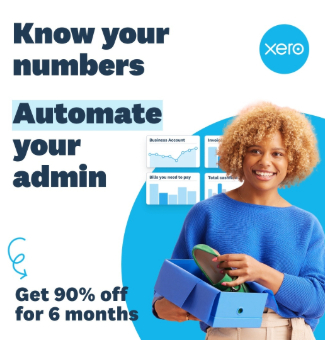Convertible loan notes (CLNs) are popular among small business owners raising money for their start-ups. They are an efficient tool that can help you secure additional funding, and in return, investors have the option to convert the loan into equity in your company via shares.
In this article, we’ll explain what convertible loan notes are, how they work, and why you might use them. If they sound like the right fit for your company, we’ll also let you know their pros and cons, and how to set one up.
Key takeaways
- Convertible loan notes provide quick funding without requiring an immediate company valuation, benefiting early-stage start-ups.
- Investors enjoy potential rewards like discounted shares and interest, making CLNs an attractive funding option.
- Clear negotiation of terms is essential to avoid complications and ensure mutual agreement between borrowers and investors.
What is a convertible loan note?
Also known as convertible bonds or convertible debt, CLNs are cash loans. They allow companies to raise funds quickly, and give the lender the option to ‘convert’ to an equity stake in the business for a discounted rate.
The conversion criteria are negotiated and agreed to by both parties before the loan note is issued. It normally happens when a specific event is reached, such as:
- The note matures (typically 12-24 months)
- The next funding round starts or reaches a certain threshold
- The company reaches a certain milestone
- The investor chooses to convert at their own discretion
- The company is sold
How do they work?
Company founders can use loan notes to secure funding quickly and easily to help their new businesses grow. Investors normally use them with the intention of converting into shares at a later date for a discounted price.
Alternatively, the note may be redeemed instead. This means that you, the borrower, must repay the loan in full, plus the agreed interest.
If the note never gets converted, the total loaned sum must be repaid. However, if it is converted into shares, you do not pay back the remainder of the loan.
All terms of the loan note are negotiated between the lender and borrower before the note is issued. Both parties should agree on:
- The repayment conditions
- Conversion price
- Conversion trigger
- Term length
- Interest rate
- Valuation cap (explained below)
Why are they used?
Loan notes tend to be used to bridge gaps between funding rounds. They are often used by high-growth start-ups to raise funds before their first equity funding round. They tend to be used by tech companies, but any sector can benefit from CLNs.
One of the main reasons why they appeal to early-stage start-ups is because they require no valuation. New companies generally have little to base a valuation on, so convertible loan notes can help you find investment until then.
Lenders might opt for loan notes as they can be less risky than buying shares directly. This is because debt generally takes priority over equity if the company goes into liquidation.
Types of convertible loan notes
There are secured and unsecured loan notes. Secured loan notes are backed by the company’s assets in the event of a default or insolvency. In this instance, the lender has the right to seize the collateral in question as repayment.
- What is a business loan and how can my company get one?
- What is a special resolution?
- What is a shareholder?
Most CLNs are unsecured, meaning that they are not protected by collateral if the company can’t afford to repay the debt. However, you may choose to make other security agreements instead.
For example, you can sign a contingency contract to vow that, if things don’t go to plan, you’ll either return the loaned sum or issue shares to the investor.
What’s in it for the investor?
In return for quick and easy funding, the investor can choose from the following rewards:
Interest
Until the loan is converted, the borrower pays interest on the loan, which is normally between 2% and 10% per annum. The accrued interest is then used to convert into equity.
Discounted shares
Unlike new investors, a convertible loan note allows early lenders to purchase company shares at a reduced cost. The discount is typically anywhere between 10% and 30%. 0% loan notes are also common, with attraction of the remaining two perks.
Valuation cap
The valuation cap sets a limit on the loan conversion price. This means that, if the investor converts at the valuation cap, they will not pay more than the agreed amount per share.
Also, if the company’s growth exceeds expectations and further shares are issued, the valuation cap guarantees the CLN investor a minimum number of shares.
The valuation cap is possibly the most important benefit of a loan note. With the early stage of a business generally being the riskiest, this perk offers the security that, if the company performs well, the lender will receive the maximum share value they agreed to.
Advantages of convertible loan notes
Quick and simple
It’s generally quicker and easier to secure funding through convertible loan notes than other loan types or equity financing rounds.
No valuation necessary
There is no requirement for immediate valuation when issuing a CLN. Instead, it can be delayed until your company is in a stronger position.
This is one of the biggest benefits for small businesses that don’t have a clear valuation yet, but require crucial funding to help get the company off to a good start.
Lower interest rates
Convertible loan notes generally have lower interest rates than traditional loans, making it cheaper to borrow. This is a huge advantage for start-ups that have limited funds.
Flexible terms
You, as the company owner, are responsible for issuing a CLN. To do this, you have the flexibility to negotiate terms that suit both your business and the investor. Whether it’s the valuation limit, discount, or interest rate, both parties have the freedom to base the contract on the circumstances that are right for them.
Retain control
Until the investor becomes a shareholder, they have no voting rights. This means that you can retain control of your company without external influence.
Disadvantages of convertible loan notes
Uncertainty
There’s an element of uncertainty with CLNs. Depending on the company’s performance and whether the loan gets converted, it’s difficult to know the true financial implications for the borrower.
Bankruptcy risk
If the note is redeemed rather than converted, the company is left with the debt of the loaned sum, interest, plus any fees. Again, depending on how the business is performing, this could cause a bankruptcy risk.
Equity dilution
Future funding rounds could dilute the noteholder’s equity if new shares are issued. It’s important to make sure that you do not issue too many shares too quickly.
Complicated terms
The negotiations of the terms and conditions of CLNs can get complicated. It is, therefore, advised that you seek professional advice when drafting up your documentation. This is an additional cost to factor in.
No tax advantages
Due to their convertible nature, CLNs do not qualify for the tax advantages of Enterprise Investment Schemes (EIS) or Seed Enterprise Investment Schemes (SEIS). This can make it difficult to find lenders.
How to set up a convertible loan note
If a loan note is the right move for your company, here are the first steps you should take to set up a convertible loan note:
1. Check your Articles of Association
Do your company rules allow you to issue CLNs?
2. Check with existing shareholders
If you have existing shareholders on board, you use a special resolution to get their authorisation to issue new shares. You can find a government-approved template on the GOV.UK website.
3. Check with other directors
You will also need permission (majority vote) from other directors to issue a loan note. This should be done via a board resolution, a legal template for taking minutes as required by the Companies Act 2006.
4. Draw up your terms
Define the terms of your loan note. This should include the loan amount, interest rate, repayment conditions, and conversion terms.
5. Draft the contract
Speak to a qualified solicitor when you’re ready to write up your contract.
6. Check with the investor
The investor should review the contract at this stage. They may propose some changes, which should be negotiated until both parties agree.
7. Sign the contract
The solicitor will update the contract, ready for you to sign.
Wrapping up
Loan notes are a useful cash injection tool for early-stage businesses. They can offer a quick and easy funding solution to help get your start-up off the ground. In return, investors are rewarded with the potential to convert into a shareholder as the company evolves.
If you have any feedback or questions about convertible loan notes, please leave a comment below or get in touch with our team.
Please note that the information provided in this article is for general informational purposes only and does not constitute legal, tax, or professional advice. While our aim is that the content is accurate and up to date, it should not be relied upon as a substitute for tailored advice from qualified professionals. We strongly recommend that you seek independent legal and tax advice specific to your circumstances before acting on any information contained in this article. We accept no responsibility or liability for any loss or damage that may result from your reliance on the information provided in this article. Use of the information contained in this article is entirely at your own risk.














Join The Discussion